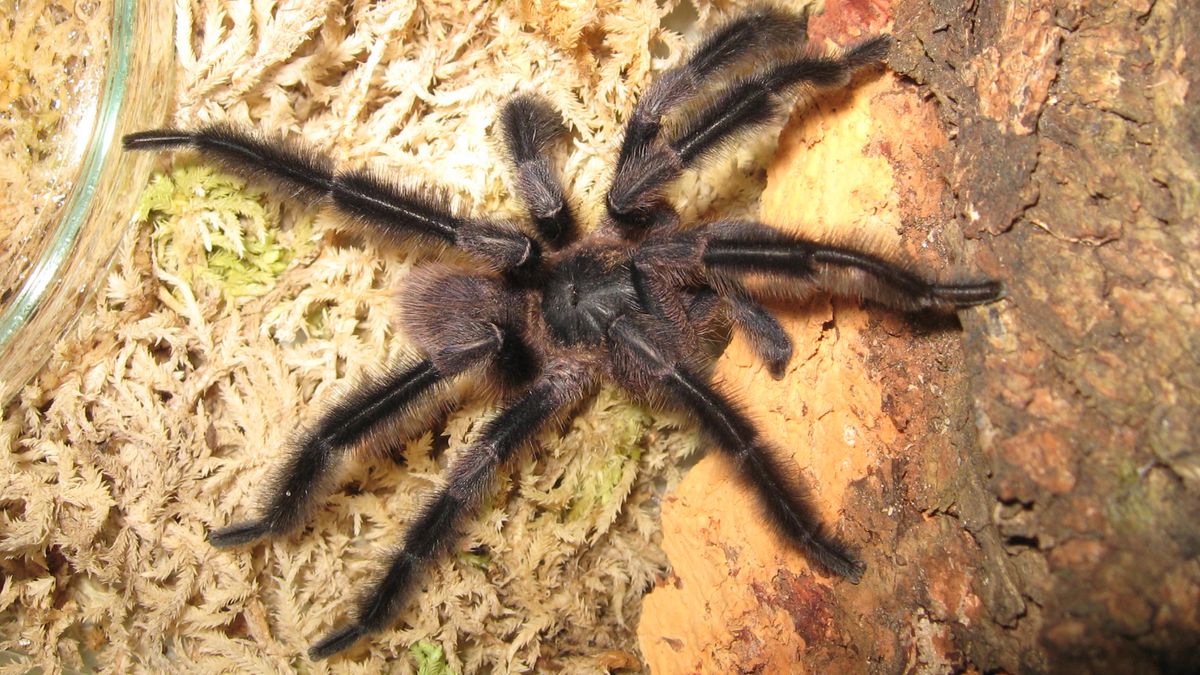Name: Hairy giant tarantula (Trichopelma grande)
Where it lives: Western Cuba
What it eats: Insects, lizards, frogs and other small reptiles
Why it’s awesome:
Arachnophobes may not appreciate the discovery of a never-before-seen “giant” tarantula species, but for fans of these misunderstood creatures, Trichopelma grande is a special find. Not only is it larger and hairier than other spiders in its genus, it is the only kind with long, fluffy, “feather-duster” legs.
T. grande was first discovered in 2008 in Viñales National Park, a biodiversity hotspot in western Cuba. So far, only four specimens have been spotted: Three adult males and one juvenile male, all found in trap-door burrows on the ground.
The Trichopelma genus is made up of 23 species, with members all being very small tarantulas. As its name suggests, T. grande is the largest known member of the genus with a body length ranging from 0.33 to 0.44 inches (8.4 to 11.2 millimetres). However, the spider’s most recognizable feature is its unusually hairy legs.
Hairy legs are typically associated with tree-dwelling tarantulas — called arboreal tarantulas — so this feature is very unusual for a ground-dwelling species.
David Ortiz, a researcher at Masaryk University in Czechia and lead author of the study describing the species, said having long, hairy legs may help the tarantulas defend themselves against predators like birds or snakes.
‘Feather duster’ legs
“The feather-duster legs are even more interesting, and might be associated with predator deterrence — the hairier the more impressive,” Ortiz told Live Science in an email. “This might be particularly useful for males, because they have a ‘wanderer’ way of life, unlike females, who remain in their burrows almost at all times. Females might not be as hairy as males, but we are not sure yet. But these are just hypotheses.”
Related: When stressed, these male spiders woo mates with empty ‘take-out containers’ instead of dinner
Having more leg hair likely also increases the spider’s sensitivity to external stimuli, such as air currents, which helps them detect the movement of predators and prey. Being larger may also help the spiders to catch food, such as insects, frogs, lizards and other small reptiles.
These tarantulas likely aren’t dangerous to humans. “Tarantulas usually have a very mild sting, probably less powerful than a bee sting. I expect the same from this species,” Ortiz said.
The males are nomadic and abandon their homes to look for females to mate with. As of yet, no female tarantulas of this species have been discovered, so less is known about their behavior.
“I think that such a unique species deserves to be examined more deeply,” Ortiz said. “The Viñales National Park is especially under threat by human activity (e.g., tree logging) and by extreme weather events like hurricanes. The valley of Viñales is deeply disturbed, and only forest patches remain untouched in the mogotes (hills) and sierras scattered along the valley.”















